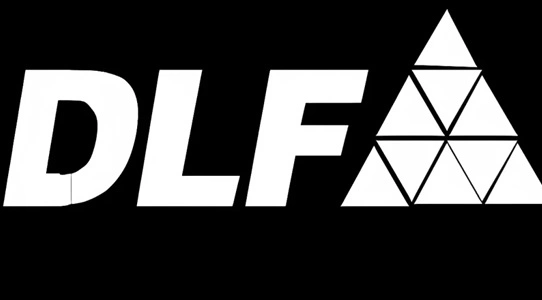DLF Limited (Delhi Land and Finance), one of India’s largest real estate developers, has played a key role in shaping the urban landscape of the country. Established in 1946, DLF has grown into a behemoth in the real estate industry, with operations spanning residential, commercial, and retail segments. The company has built iconic landmarks like DLF Cyber City in Gurgaon and premium residential projects across India. In this article, we will analyze DLF’s business model and explore how the company generates revenue.
Overview of DLF’s Business Model

DLF operates on a diversified real estate business model, which includes:
- Residential Development: Construction and sale of high-end apartments, villas, and plotted developments.
- Commercial Real Estate: Leasing office spaces and IT parks to corporate tenants.
- Retail Properties: Developing and managing shopping malls and retail spaces.
- Hospitality: Investing in luxury hotels and resorts.
- Property Management Services: Offering maintenance and facility management services for properties.
DLF follows a mixed business model that combines sales-based revenue with annuity-based income from leased properties, creating a balanced and sustainable revenue stream.
Revenue Streams
DLF’s revenue comes from multiple sources, which can broadly be divided into two categories: Development Business (sales-driven) and Rental Business (annuity-driven).
a) Residential Development
The development business involves the construction and sale of residential properties, including:
- Luxury apartments and villas in urban areas.
- Mid-income housing projects.
- Plotted developments in Tier 1 and Tier 2 cities.
Key factors driving revenue from this segment include:
- Pre-Sales Revenue: DLF earns significant income through pre-launch bookings of residential projects.
- Premium Pricing: The brand’s reputation allows it to charge a premium for its properties, especially in metro cities like Gurgaon, Delhi, and Bangalore.
- Volume Growth: The company targets high volumes through diverse housing offerings.
b) Commercial Real Estate
DLF is a leader in India’s commercial real estate segment, leasing office spaces to corporate clients. The portfolio includes:
- IT parks and office complexes, such as DLF Cyber City in Gurgaon.
- Co-working spaces to cater to the rising demand for flexible offices.
- Built-to-suit campuses for large enterprises.
Revenue in this segment comes from:
- Lease Rentals: Long-term contracts with corporate tenants provide steady, predictable cash flow.
- High Occupancy Rates: Strategic locations and quality infrastructure ensure near-full occupancy of DLF’s commercial properties.
c) Retail Properties
DLF operates some of India’s largest and most luxurious shopping malls, such as DLF Mall of India in Noida and DLF Emporio in Delhi. Revenue streams from retail properties include:
- Leasing Retail Spaces: Retailers rent spaces in DLF malls, generating consistent income.
- Revenue Sharing: DLF enters revenue-sharing agreements with some tenants, earning a percentage of their sales.
- Advertising: The malls generate additional revenue through in-mall advertising and promotions.
d) Hospitality
DLF has a stake in the hospitality industry, primarily through its partnerships with luxury hotel brands such as Hyatt and Hilton. Revenue sources include:
- Room bookings and events.
- Food and beverage services.
- Spa and wellness services.
e) Property Management Services
DLF also generates revenue through property management and maintenance services for its developments. These services ensure a steady income while enhancing customer satisfaction and retention.
Cost Structure
DLF incurs significant costs in its operations, which can be broadly categorized into:
a) Land Acquisition
Acquiring prime land is a major expense for DLF. The company focuses on high-potential urban and suburban locations to maximize returns.
b) Construction Costs
Developing properties involves high construction costs, including raw materials, labor, and equipment. DLF ensures quality and timely delivery to maintain its brand reputation.
c) Marketing and Sales
The company invests heavily in marketing campaigns, digital promotions, and sales teams to drive bookings for residential and commercial projects.
d) Maintenance and Operations
For leased properties and malls, operational costs like maintenance, utilities, and property management are significant.
e) Financing Costs
Given the capital-intensive nature of real estate, DLF relies on a mix of equity and debt financing. Interest payments on loans are a substantial expense.
Key Strategies for Revenue Growth
To sustain its leadership position, DLF employs several strategies:
a) Focus on Annuity Income
DLF is increasing its focus on the rental business, which provides steady, recurring income. The company aims to grow its portfolio of leased commercial and retail properties to strengthen annuity revenues.
b) Geographic Expansion
DLF is expanding into Tier 2 and Tier 3 cities to tap into the rising demand for affordable and mid-income housing. This diversification reduces dependency on metro markets.
c) Luxury and Premium Offerings
The company continues to develop high-end residential and retail properties, targeting affluent customers willing to pay a premium for quality and exclusivity.
d) Sustainable Practices
DLF has embraced sustainable construction practices, such as using eco-friendly materials and adopting green building certifications. This aligns with global trends and enhances the company’s appeal to environmentally conscious buyers and tenants.
e) Digital Transformation
DLF is leveraging technology for online bookings, virtual property tours, and customer relationship management, making the buying process seamless and improving customer satisfaction.
Challenges and Opportunities
Challenges
- Regulatory Hurdles: Changes in real estate regulations, such as the Real Estate (Regulation and Development) Act (RERA), increase compliance costs and affect project timelines.
- High Competition: DLF faces stiff competition from other real estate giants like Godrej Properties, Prestige Group, and Sobha Limited.
- Economic Uncertainty: Real estate demand is sensitive to economic conditions, interest rates, and market sentiment.
Opportunities
- Rising Urbanization: The growing demand for housing, commercial spaces, and malls in urban areas presents significant growth potential.
- Commercial Real Estate Boom: The shift towards hybrid work models and co-working spaces is driving demand for office spaces.
- Affordable Housing Push: Government incentives for affordable housing projects create new revenue opportunities for developers like DLF.
Financial Overview
As of the latest financial reports, DLF has shown robust growth in both revenue and profitability, driven by strong sales in the residential segment and high occupancy rates in commercial properties. The company has also reduced its debt significantly in recent years, improving its financial stability.
Conclusion
DLF’s diversified business model, which balances sales-driven and annuity-based income, has enabled it to maintain leadership in India’s real estate sector. By focusing on luxury developments, expanding into new markets, and embracing technology and sustainability, DLF is well-positioned to capitalize on emerging trends in the real estate industry. With its strong brand equity and robust operational framework, DLF continues to set benchmarks in India’s real estate market.

